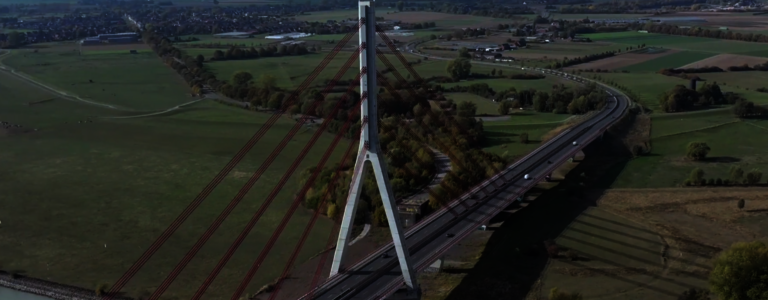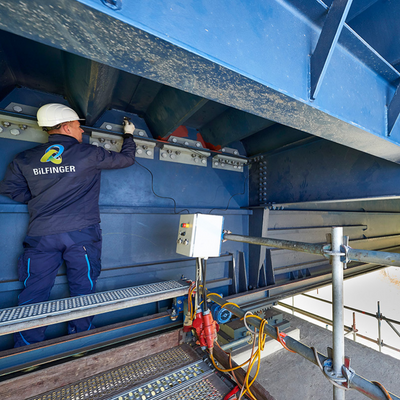- Bilfinger deploys intelligent technology for bridge monitoring
- Collaboration with Hessen Mobil on the Thalaubach viaduct
Bridges serve as critical nodes in any traffic system. The acoustic emissions analysis used by the industrial services provider Bilfinger in monitoring the safety of bridge-bearing structures is helping to make Germany’s roads even safer. This service, performed by the Bilfinger subsidiary Bilfinger Noell, allows any incipient structural deteriorations to be identified promptly and located more precisely. To this end, Bilfinger continuously monitors the structure using sensor technology and intelligent data analysis.
Every hairline crack or minute change in the fabric of a building structure emits sonic signals. These “stress relaxations” are audible and provide a clear indication of the condition of the underlying material. “Besides frost, heat or vibrations, the prevailing, high-frequency ambient sounds can also make it harder to ‘clearly hear’ a structure from the outside,” explains Bilfinger CEO Tom Blades. “Now that this technology has been refined, Bilfinger is able to listen in to the sounds emitted by a bridge’s supporting structure.”
In a pilot project pursued jointly with the local public transport company Hessen Mobil, intelligent acoustic emissions testing (AET) was successfully used for the first time to monitor the load-bearing structures of the Thalaubach viaduct near Fulda. The complex data-analysis process uses high-tech sensors in combination with special software that can track every single event occurring in the structural fabric, even under challenging environmental conditions. Thus, it was possible to keep Autobahn A7 in uninterrupted service throughout the entire critical winter season.
The Thalaubach viaduct will be monitored on a permanent basis going forward. During the analysis period running until the end of 2021, the competent public transport company will receive a continual feed of information about the structure’s condition via a live manager. “This innovation supplements visual inspections and walk-throughs, raising the inspection of bridge structures to a new level,” says Tom Blades.
The service offered is a significant improvement over the standard inspection procedures presently in use for bridge-monitoring purposes. The technology’s advantages are obvious:
Any changes in the fabric of the load-bearing structures are detected while they are still arising and are reported automatically to the bridge operator via an alarm signal.
Bilfinger has also recently begun using a newly developed program that continually analyzes the bridge’s operations around the clock. It uses sensors to interpret sound and temperature signals emitted by the bridge and classifies these on the basis of a traffic light rating system (red, yellow, green).
Bilfinger is the first industrial services provider to successfully assist Hessen Mobil with an intelligent, continuous monitoring of bridges. As an added benefit, the Bilfinger service will pave the way for predictive and safe “end-of-life management,” which will also enable the useful life of bridges to be extended. Plans are already underway to equip additional bridges in Hessia with the monitoring system.



